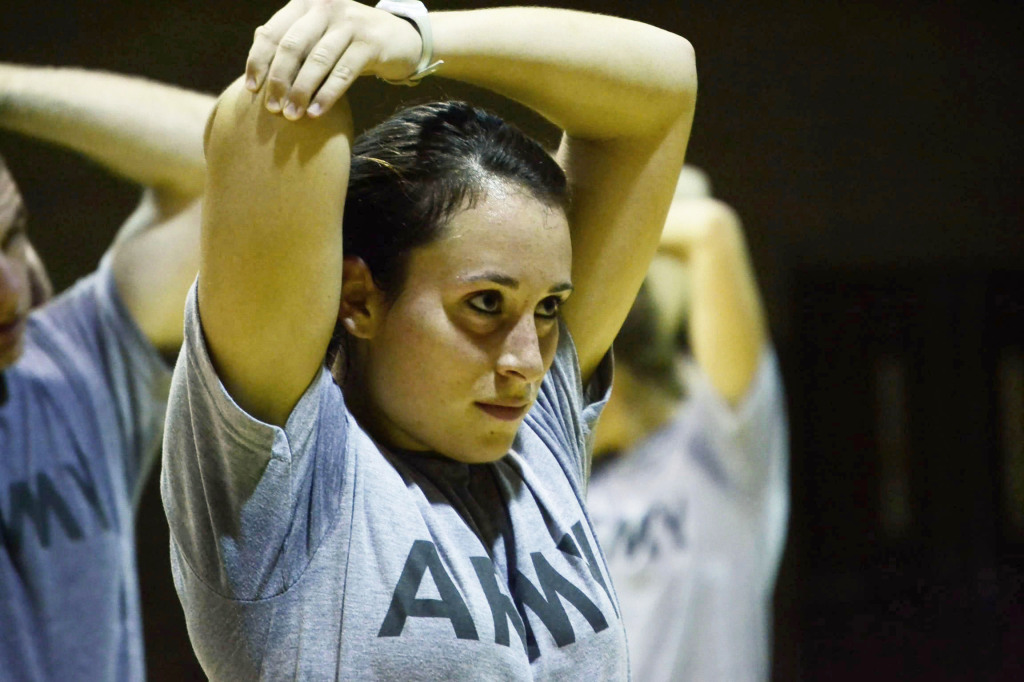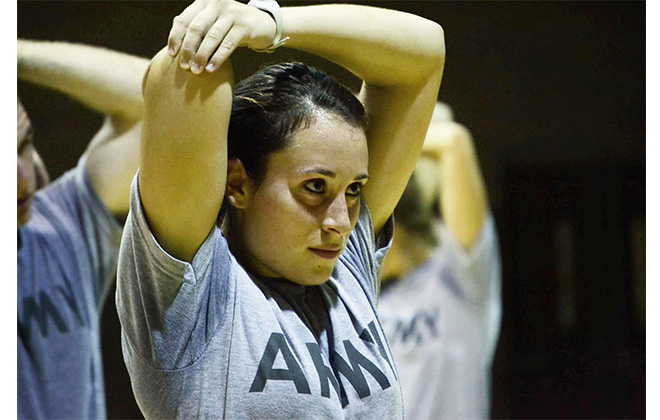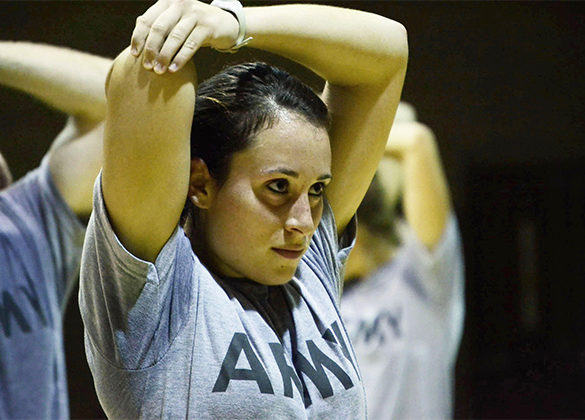
Doing these exercises help avoid injuries.
Molly Martin sat nervously at the table. She had to make an announcement to her parents that she going to change a big part of her future.
“Mom and Dad, I have something that I want to talk to you about,” she said. “This is something that I really wanted to tell you. I’ve really been thinking hard about this decision, but I’ve gone ahead and joined Army ROTC at Ball State University.”
All eyes were on her as she delivered the news to her parents and extended family. In her mind, she knew it was not the best time because it was Thanksgiving and the family had just sat down for dinner.
The room filled with an awkward silence before her parents responded. Martin did not discuss her decision with her parents and it came as an unexpected surprise. Questions and concerns broke the silence.
“What does this mean?”
“Will you finish your degree?”
“What comes after graduation?”
“Will you still get to be a nurse in the Army?”
She explained to them that she wanted to serve in the Army as nurse on active duty and planned to help aid citizens in cities where she would be deployed.
“As a nurse, I serve not only the soldiers but also the community members,” she said.
Master Sgt. Michael Black, the senior military science instructor, said the program is designed to prepare students for the significance of leadership when they become officers.
Since the 2005-2006 school year, the program’s enrollment increased by 50 percent, according to an article in The Washington Post.
“The Army is in the waning stages of war and has largely stopped growing,” Johnson said. “Yet its ROTC program is reaching near-historic enrollment.”
Army ROTC has the largest number of officers in the military, said the U.S. Army Cadet Command. It generates roughly 60 percent of the second lieutenants. Nearly 15 percent of those second lieutenants are woman.
Martin said her decision to pursue a career as an officer made her parents feel uneasy. She invited them to talk to Wesley Russell, the recruiting and operations officer for the program at Ball State.
“There are a lot of risks involved,” he said to her parents. “The obvious one is going into combat as well as being a female in the military.”
Roughly 20 percent of cadets in Army ROTC are women, according to the U.S. Army official website.
As Russell discussed the program with Martin’s parents, they began to feel better about sending their daughter off. Martin quickly moved into the program and gathered everything she needed, including the proper uniform.
Martin set a schedule to organize her days. She had to prepare herself for waking up early in the morning.
At 5 a.m., she stared into her bathroom mirror and looked at a quote taped on it.
It read: “Courage is not the absence of fear, but rather the judgment that something else is more important than fear.”
She put on her Army shirt and shorts with a reflector belt and brushed her teeth after making her bed, a routine she followed every morning. Grabbing her bag, she walked out of her apartment by 5:30 a.m., leaving her roommates sound asleep.
Martin drove to campus and walked through the doors of Ball Gymnasium. She set her duffle bag on the floor beside the blue, folded bleachers before joining other students in formation.
Monday through Thursday, students in the program at Ball State participated in physical fitness test sessions to prepare for their monthly exam.
“In our profession, we can be placed in stressful situations and as a leader, we want to be able to make sound decisions in all situations,” Russell said.
Martin hopes to station in Hawaii or Texas and earn a certificate as a flight nurse in combat, where she provides care to patients during operations on an aircraft.
“To me, wearing this uniform represents more than just serving my country,” Martin said. “It signifies the sacrifices made for each and every one of us. It is my job to ensure I fulfill my duties to the Army with the best of my ability all while keeping the morale of the American citizens positive.”




